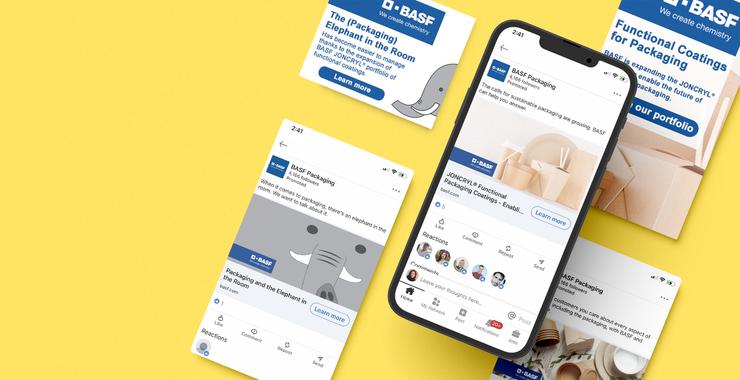How to implement B2B keyword research on any budget
So, you’ve done your keyword research — what happens now? Get ideas for small, medium, or large-scale B2B marketing tactics you can use to match your budget and timeframe.

Done right, keyword research can dig up a treasure trove of data about your audience, including what they search for and how you stack up against the competition. There’s an art to sifting through all that treasure to find the most valuable gems.
Once you have all that information, what can you do with it, and how do you implement it to boost your B2B brand’s visibility on the search engine results page (SERP)?
With a bit of time and little to no budget, there are small steps you can take to do just that. You also have larger-scale options that require more investment and yield opportunities for more impactful results, as well as everything in between.
To get you thinking, we’ll share a handful of solid suggestions from each category. First, a bit of background.

How keyword research works
For SEO experts like Brandon Gilmore, Manager of SEO & Analytics at Motum B2B, keyword research starts with an SEO crawl on your website using algorithmic tools such as Screaming Frog and SE Ranking. Then it’s about comparing the site’s SEO metadata with the keywords it’s trying to target.
“We take that information and use tools to understand what keywords people typically use, trending keywords, related keywords, and subsets of those keywords,” Gilmore explains. “We also look at analytics to see what’s currently driving to the website and identify opportunities for better performance.”
The research wouldn’t be complete without looking at the competition. On the SERP itself, keyword research evaluates what competitors are doing and how well they rank for the keywords and audience you’re after.
“Fundamentally, keyword research is a mix of technical audit, analytics, and audience research,” says Gilmore. “Then we start coming up with a strategy based on what the site is missing, what the brand’s goals are, and what optimizations can take place to achieve those goals.”
Something to watch out for
A common pitfall in SEO is relying on keywords that are too broad. If you’re working in a niche B2B industry, it’s often more useful to sharpen your targets and use longer-tail keywords — that is, keywords with three or more terms in one phrase — that add the specificity and relevance you need to get ahead.
Keyword research on any budget
Small moves ($)
Update metadata
The first quick win Gilmore suggests is updating the SEO metadata on your site. Metadata such as title tags, meta descriptions, image titles, and alt tags describe the content contained in each webpage and help search engines understand what the page is all about.
“Placing keywords in the meta title can have a big impact on rankings within the search results, because it adds context that previously wasn’t there,” Gilmore says, noting that key areas such as the homepage, category or industry pages, and service pages can often benefit from more specific descriptions that nail down what your business provides to customers.
“This is something anyone can do, but we like to help clients do that en masse through templates or automation,” he adds. On a tighter timeline, use your keyword research to prioritize the pages that need a boost in visibility and focus on updating those first.
Add internal links
“Once you identify keywords that are helpful and relevant to the content, you can start inserting internal links,” Gilmore says. “It’s a way of reinforcing the authority within your website.”
This one is simple. All you have to do is find keywords in the existing content and link it to related pages on your website. If a blog mentions the name of an industry you serve, link that to an industry-related page on your site. If a case study highlights a specific product, link it to the product page. Done!
Medium moves ($$)
Create FAQs
You don’t need to be a writer or a subject matter expert to create FAQs. Your keyword research will highlight the kinds of common questions users are typing into search engines, and you can ask your sales and technical support teams about the topics customers are curious about.
You can also source FAQs through existing content anywhere on your website. Just find a slice of information about your business, products, or services, and rephrase it as a question. Keep the answer short, and if you have one, link to a page that elaborates on the answer.
This is in the medium category because you may not have a dedicated FAQs area on your website yet. Once you have that set up, add an FAQ or two each month for a steady stream of quick wins.
Refresh older blogs
Writing blogs and case studies is a great way to capture keywords that you currently aren’t ranking for. If writing isn’t your strong point, you may be able to get more mileage out of older content. First, take a look at previous content that ranked well initially but isn’t getting as much traffic these days.
“Refreshes are a good opportunity to integrate new keywords and update content,” Gilmore explains. “The research can show you what keywords are in striking distance, so you can optimize content to perform better through a refresh exercise.”
While looking at older blogs, you might find other areas in need of improvement — maybe some product information is outdated, your brand messaging has changed, or you have newer data to support your claims. Now’s the time to update it all and add some sharper keywords. Bonus points if you spruce up the metadata and internal links as well.

Big moves ($$$)
Overhaul sections of the site
With the right strategy, a big investment can yield a big impact — not just on search rankings but with user experience, building trust with your audience, and conversions.
“You have to see what the competition is doing and be better,” Gilmore says. To that end, a keyword research exercise might recommend an overhaul of certain sections of your site, such as industry pages, category pages, or event postings.
The goal is often to add more helpful information within those pages along with features, visuals, or links that relate to other content on your site. For example, event pages might start by simply stating where and when the event will take place, but you can make them more competitive by adding information about what products you’ll be showcasing, linking to related products or services, or mentioning people in your team who will be attending.
Create useful tools
Keyword research often highlights common questions users need answers to, products or data they want to compare, or concepts they want explanations for. Comparisons are particularly common in B2B — think “product A vs. product B” or the differences between certain product models.
This is where tools and interactives can shine. You might be inspired to build a product comparison tool, a calculator that recommends the right configurations or customizations for a given product, or a filtration system that helps users narrow down the product or service they need for their particular industry.
Goals and audience
Your chosen tactics will ultimately depend on what your keyword research reveals. You may have strong content already in place, but without optimizing metadata, it’s all but invisible to search engines. Alternately, you may not have enough content or the right type of content to match the search intent of your audience.
“It’s really important to keep your goals and audience in mind,” Gilmore says. “Those are the two most important things for us when we do our keyword research.”
How can you make data work for you?
Ask our SEO experts for recommendations to stay competitive on the SERP.
